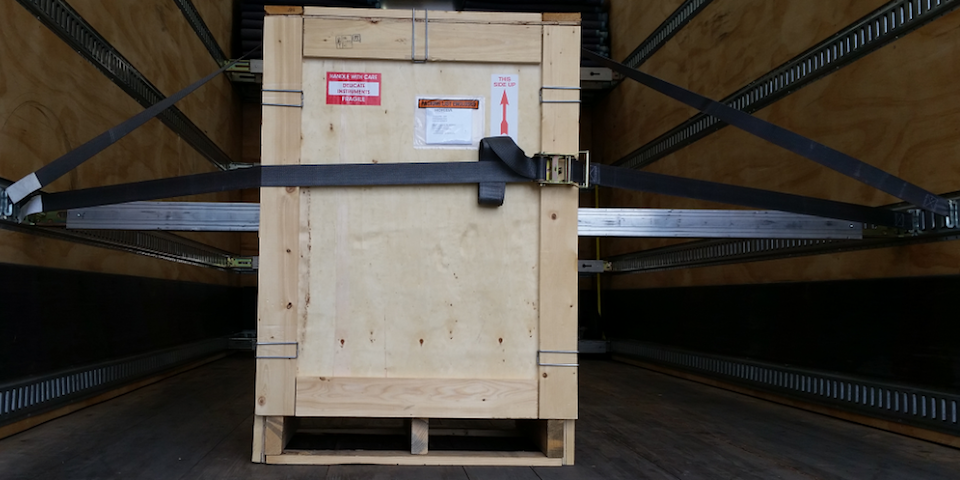Fuel for Thought

Are You Secure?
Securing a load will have different requirements depending on the load to be secured, type of vehicle and even some very specific rules for securing certain loads. Generally, for dry vans and reefers, straps, load bars or shoring beams will be used, or any combination of these securement devices. Understanding what each can or cannot do is critical to proper securement. Each securement device, whether it is a strap, load bar or shoring beam (decking beam), has a weight rating. You must know the weight of the cargo to be secured in order to use a sufficient means of securement.
So you know the weight ratings of your securement equipment and you know how to use it properly, that’s great. Do you know that citations can be issued for unsecured or undersecured cargo?
FMCSA (Federal Motor Carrier Safety Administration) regulation §392.9 allows for citations to be written and CSA (Compliance, Safety, Accountability) points given for a variety of issues, including unsecured or undersecured freight. While it may not be one of the more serious violations as far as CSA points are concerned, it is still a violation that comes with points. And when you get points, so does your carrier, which in turn can affect the other drivers at your carrier.
On the subject of cargo securement, §392.9(2) and §393.100 - §393.136 applies your cargo and load securement devices and all other equipment you carry. That loose strap thrown in the front corner is unsecured vehicle equipment. That load bar lying on the floor, sliding all around is unsecured equipment. The pallet jack that rolls around because “The walls and the door will keep it inside” is unsecured equipment. All of these and and any other equipment you carry should be secured just the same as the freight you haul. Any of these items found by law enforcement to be unsecured have the potential to increase your CSA points and get you a citation. While the amount of points for failure to secure a load, or cargo, or vehicle equipment is only 1 point, multiple articles can lead to multiple points and many times any violation found can lead to more scrutiny and the possibility of additional fines and points.
Speaking of getting multiple points, the possibility for much more than 1 point is much greater than you might think.
| Section | Violation Description Shown on Driver/Vehicle Examination Report Given to CMV Driver after Roadside Inspection | Violation Group Description | Violation Severity Weight[2] | Violation in the DSMS (Y/N) |
|---|---|---|---|---|
| 393.100 | Failure to prevent cargo shifting | General Securement | 7 | Y |
| 393.102(a) | Improper securement system (tiedown assemblies) | Tiedown | 8 | Y |
| 393.102(a)(1) | Insufficient means to prevent forward movement | Failure to Prevent Movement | 8 | Y |
| 393.102(a)(1)(ii) | Insufficient means to prevent rearward movement | Failure to Prevent Movement | 8 | Y |
| 393.102(a)(1)(iii) | Insufficient means to prevent lateral movement | Failure to Prevent Movement | 8 | Y |
| 393.102(a)(2) | Tiedown assembly with inadequate working load limit | Tiedown | 8 | Y |
| 393.102(c) | No equivalent means of securement | Improper Securement | 10 | Y |
| 393.106(b) | Cargo not immobilized or secured | Failure to Prevent Movement | 8 | Y |
| 393.106(c)(2) | Cargo without direct contact/prevention from shifting | Failure to Prevent Movement | 8 | Y |
The examples above are only a few of the regulations that apply to equipment and cargo securement. As you can see, CSA points and fines can add up quickly.
Secure your freight AND your equipment properly.
See you down the road,
Greg
